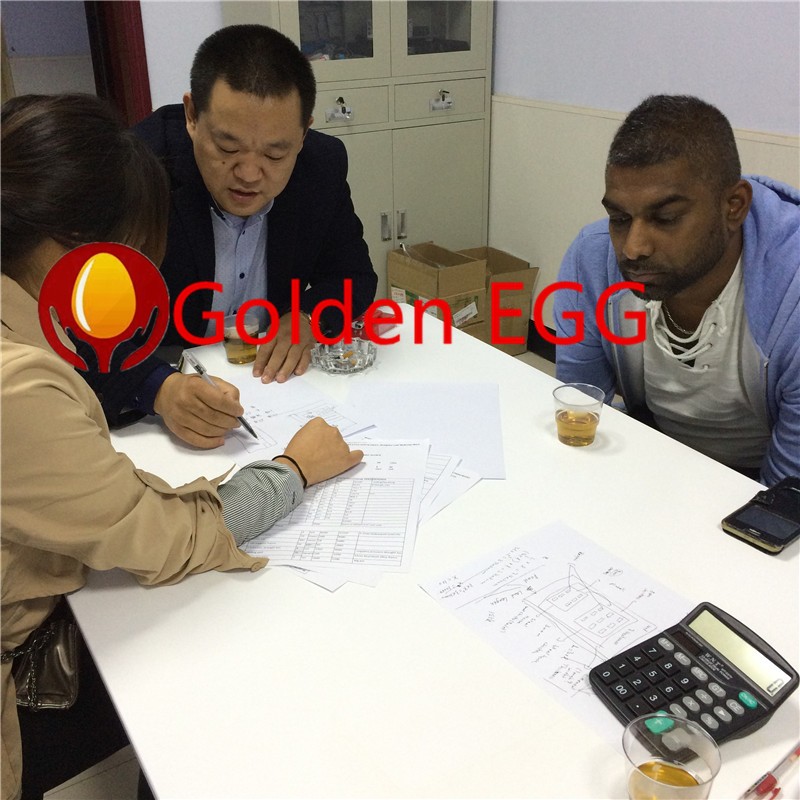1 ,Physiological characteristics of laying hens
Although the newly-started hens have matured and started to lay eggs, the body has not yet fully developed. The body weight at 18 weeks of age still continues to grow. By the age of 40 weeks, the growth and development basically stopped, and the body weight growth was minimal, after 40 weeks of age. Weight gain is mostly fat savings. Different age groups of laying hens have different utilization rates of nutritive substances. When the hens are mature (17-18 weeks old), mature ovaries release estrogen, which significantly increases the calcium storage capacity of hens, and the peaks of opening and production are reached. During the period, the chicken's ability to digest and absorb nutrients increased, feed intake continued to increase, digestion and absorption capacity diminished after the laying season, and fat deposition capacity increased. There are regular changes in body weight, egg weight and egg production of laying hens during the first laying cycle. Based on these changes, they can be divided into three periods: pre-laying, peak laying, and egg laying. Late period.
2 ,Feeding management in pre-laying
In the first 3 to 5 days of the transition, the laying hen houses are prepared and disinfected, and the hens are immunized and repaired before the group is transferred. Regarding the timing of the transfer, due to the results of breeding in recent years, the date of production of chickens is advanced, and it is advisable to carry out the transfer at the age of 16 weeks. When the chickens are 17 to 18 weeks of age, the weight of the chickens will reach the standard and the production will be replaced immediately. Egg material can increase the body's calcium stores and allow the young hens to store adequate nutrition and strength in the prenatal body. Practice has shown that, depending on body weight and sexual development, replacing egg-laying materials earlier in the year will be beneficial to the future production of eggs. Late use of calcium materials will cause paralysis and produce soft shell eggs. Opening is a major turning point in the life of the hen and it is a great stress. During this time, the reproductive system of the hen is quickly developed and matured. The weight of puberty still needs to be increased, and the weight should increase by 400 to 500 g. As the egg weight gradually increases, the egg production rate rises rapidly and consumes most of the hen's physical strength. Therefore, it is necessary to reduce external interference with the chicken as much as possible to reduce various stress and provide a stable and stable living environment for the chickens. , and guarantee to meet the nutritional needs of chickens.
The light management during the laying period should be consistent with the lighting during the breeding stage. Feeding in open chicken houses, such as when the group is in a season where natural light gradually increases, and the birds use natural light completely during the breeding period, the light hours have reached 10h or more in the group, and there is no need to fill in the group when transferring eggs into the house. With artificial lighting, until the natural light starts to shorten, artificial lighting is added to supplement it. The progress of artificial lighting subsidies is increased every week.
3, Egg production period daily management
Every day from 12 to 14 points must have a certain empty slot time to prevent the feed from being stored in the chute for a long time, which causes the chickens to have an anorexic and picky eater habit. Each time the material is fed, it should be thrown evenly, so that the input material is evenly distributed in the material tank, about 30 minutes after input, it is necessary to evenly feed the material once. This is because the chicken feeds quickly within the first 10 minutes after the material is fed. It will pick and drink food hooks. At this time, there will be more material in the tank. The chickens will quickly put the material in the tank into small piles. The distribution of the feed in the tank will be extremely uneven, and the material will often be pulled out of the tank. The waste of feed has affected the feeding of other chickens. The amount added should not exceed one-third of the depth of the tank at each feeding.
During the laying period, the water consumption of laying hens is related to the body weight and the ambient temperature, and the amount of drinking water increases with the increase of the house temperature and egg laying rate. Egg laying hens cannot be cut off during the laying period. There are data indicating that the birds are cut off for 24 hours and the egg production rate is reduced by 30%. It takes 25 to 30 days for the birds to return to normal. Insufficient drinking water caused by various reasons will make feed intake significantly. In order to reduce the damage and pollution of eggs, eggs should be picked up in time and eggs can be picked 3 to 4 times a day. The more eggs are picked, the better. The best time to observe the mental health of chickens is when feeding and after feeding. Those who are sick often do not eat or feed fast, or even eat a few times, healthy chickens are just When feeding, an irritated state of turmoil will occur. After feeding, it will be quickly plucked. When a poorly broiled chicken is found, it is necessary to further carefully observe its demeanor, the crown color and the coat condition, etc., and then pick out the isolation and treatment or eliminate the cage. The keeper should also observe the defecation of chickens every day to understand the health of the chicken.
























